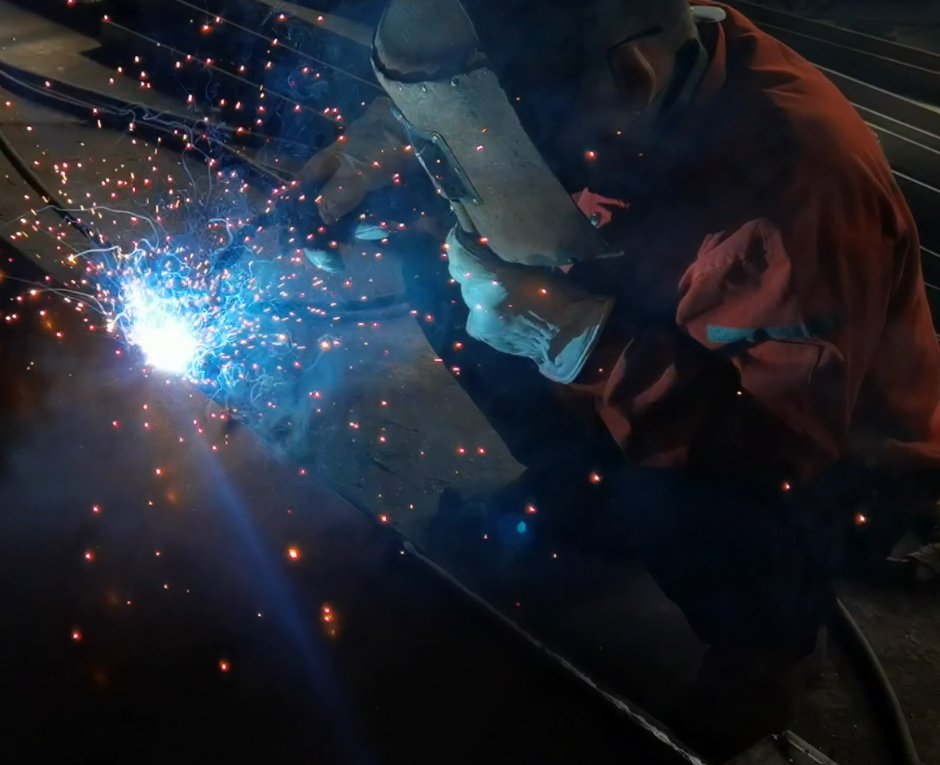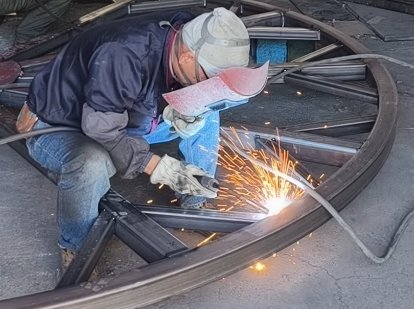
What is secondary welding? A complete guide to metal secondary welding processes
I. The core definition and value of secondary welding

In the metal welding technology system, secondary welding is not a standalone welding method. Rather, it is a re-welding operation performed on a welded joint after the primary welding (initial welding) of a metal material is completed to repair defects, enhance strength, achieve proper fit, or optimize performance. It is a critical supplementary process that compensates for deficiencies in primary welding and ensures metal welding quality. It is widely used in high-precision applications such as pressure vessels, steel structures, and aerospace, and is considered the "last line of defense" for metal welding quality control.
II. A complete guide to secondary welding processes
Before operation: Three core preparations for secondary welding
70% of the success or failure of secondary welding depends on preliminary preparation, which must be carried out around the principles of "clarifying requirements, eliminating potential hazards, and aligning resources."
(I) Accurate Positioning: Clarifying Core Requirements
1. Defect Detection: Use nondestructive testing techniques such as ultrasonic, X-ray, and penetrant testing to locate the type (cracks, pores, etc.), size, and location of defects in the primary weld joint, creating a distribution map.

2. Performance Evaluation: Conduct tensile, impact, and hardness tests to determine whether the joint strength and toughness meet the standards and clarify reinforcement requirements.
3. Assembly Confirmation: In modular assembly scenarios, verify component dimensional deviations and joint clearances to determine weld location and length.
(II) Hazard Elimination: Prepare the Area to Be Welded
1. Defect Elimination: Remove deep defects with carbon arc gouging. Surface defects are mechanically polished, extending the removal range 2-3mm beyond the defect edge.
2. Surface Cleaning: Use sandpaper, a wire brush, or acetone to remove rust and oil stains to reveal the metallic luster.
3. Groove Preparation: If the groove is deep after defect removal, prepare a 60-70° groove with a blunt edge of 2-3mm to ensure penetration.
(III) Resource Matching: Compatibility of Materials and Equipment
1. Material Selection: The filler material must match the base metal and primary welding material—for carbon steel, use J422 welding rods; for stainless steel, use welding wire of the same type; and for aluminum alloys, use aluminum-silicon welding wire. 2. Equipment Commissioning: Adjust parameters such as current and voltage based on the welding method (manual arc welding, argon arc welding, etc.) to ensure equipment stability.
3. Auxiliary Preparations: Prepare preheating equipment, insulation materials, and a thermometer; hardened materials such as Q345 must be preheated to 100-200°C.
During Operation: Key Processes and Standards for Secondary Welding
Balance "fusion quality" and "heat effect control" must be maintained, and parameters and techniques must be strictly controlled.

(I) Parameter Setting: Controlling Heat Input
1. Basic Parameters: Manual arc welding current 80-150A, voltage 20-25V, speed 5-10cm/min; argon arc welding current 60-120A, argon gas flow 8-15L/min.
2. Multi-Layer Welding Parameters: For welds exceeding 8mm in thickness, use multi-layer, multi-pass welding, with each layer thickness ≤4mm and interpass temperature <100°C.
(II) Welding Techniques: Ensuring Fusion
1. Wire Feeding Method: For butt welds, use a straight line or small oscillating motion; for fillet welds, use a zigzag motion. The oscillation amplitude should not exceed three times the rod diameter.
2. Weld Pool and Joint: Observe the weld pool and immediately stop welding and clean any porosity. For multi-layer welds, stagger the weld joints by at least 50mm, and use the "reflow" method to fill the arc crater at the end.
(III) Process Monitoring
Pay attention to the temperature of the heat-affected zone. Use "step-by-step skip welding" to reduce deformation for thin-walled parts. Check the weld height (0-3mm) and width (1-2mm wider than the groove) in real time. In the event of arc interruption or power supply fluctuations, clean the weld before re-welding.
Post-Operation: Quality Inspection and Finishing
Confirm the results through a closed loop of "inspection - stress relief - finishing."
(I) Quality Inspection
1. Nondestructive Testing: Ultrasonic testing for internal defects, penetrant testing for surface defects, and X-ray testing for critical components. 2. Performance and Appearance: Mechanical testing should be performed on selected samples; tensile strength should be ≥ 90% of the parent material; the appearance must be smooth and free of defects, and a crisp sound should be heard when tapping the weld seam.
(II) Stress Relief
1. Conventional Treatment: Insulate general components with asbestos cloth for 2-4 hours, followed by slow cooling.
2. Professional Treatment: High-risk components should undergo stress relief annealing at 550-650°C, or vibration aging to release stress.
(III) Finishing
Grind weld seams to remove spatter; acid-wash and passivate stainless steel parts; organize process parameters, test reports, and other items for archiving.
III. Four Key Considerations for Secondary Welding
1. Material Sensitive: For aluminum and titanium alloys, use low-heat-input processes such as pulsed argon arc welding, and strictly control interpass temperatures.
2. Safety Precautions: Wear a welding helmet, insulated shoes, and other equipment. Ensure strong ventilation in enclosed spaces. Wear a dust mask when cleaning defects.
3. Process Consistency: Prioritize consistency with the primary welding method; any changes require a process assessment. 4. Rework Limit: The same joint may not be reworked more than twice; otherwise, it will be considered scrapped.
In short, secondary welding is a delicate process in metal welding. Only by strictly controlling details throughout the entire process can its repair and reinforcement value be fully realized, ensuring structural safety and reliability.
Kailai Machinery utilizes various welding methods, including electric welding, double-container welding, argon arc welding, and laser welding. We also have a variety of welding equipment, including seam welders, butt welders, automatic welding manipulators, and ultrasonic flaw detectors. We can meet the welding and inspection requirements of products of various sizes. If you require any, please contact us.

